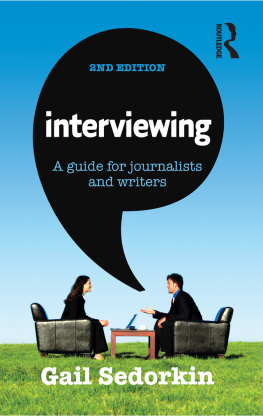Kligman Gail - Peasants under Siege
Here you can read online Kligman Gail - Peasants under Siege full text of the book (entire story) in english for free. Download pdf and epub, get meaning, cover and reviews about this ebook. year: 2011, publisher: Princeton University Press, genre: Politics. Description of the work, (preface) as well as reviews are available. Best literature library LitArk.com created for fans of good reading and offers a wide selection of genres:
Romance novel
Science fiction
Adventure
Detective
Science
History
Home and family
Prose
Art
Politics
Computer
Non-fiction
Religion
Business
Children
Humor
Choose a favorite category and find really read worthwhile books. Enjoy immersion in the world of imagination, feel the emotions of the characters or learn something new for yourself, make an fascinating discovery.

- Book:Peasants under Siege
- Author:
- Publisher:Princeton University Press
- Genre:
- Year:2011
- Rating:5 / 5
- Favourites:Add to favourites
- Your mark:
- 100
- 1
- 2
- 3
- 4
- 5
Peasants under Siege: summary, description and annotation
We offer to read an annotation, description, summary or preface (depends on what the author of the book "Peasants under Siege" wrote himself). If you haven't found the necessary information about the book — write in the comments, we will try to find it.
Peasants under Siege — read online for free the complete book (whole text) full work
Below is the text of the book, divided by pages. System saving the place of the last page read, allows you to conveniently read the book "Peasants under Siege" online for free, without having to search again every time where you left off. Put a bookmark, and you can go to the page where you finished reading at any time.
Font size:
Interval:
Bookmark:
PEASANTS UNDER SIEGE
THE COLLECTIVIZATION OF
ROMANIAN AGRICULTURE, 19491962
Gail Kligman and Katherine Verdery

Copyright 2011 by Princeton University Press
Published by Princeton University Press, 41 William Street,
Princeton, New Jersey 08540
In the United Kingdom: Princeton University Press, 6 Oxford Street,
Woodstock, Oxfordshire OX20 1TW
press.princeton.edu
Cover art: Establishing the Collective Farm (Constituirea Gospodriei Colective), painting by
Corneliu Baba, 1950. Courtesy of City Museum of Bucharest (Muzeul Municipiului Bucureti).
All Rights Reserved
Library of Congress Cataloging-in-Publication Data
Kligman, Gail.
Peasants under siege : the collectivization of Romanian agriculture, 1949-1962 / Gail Kligman, Katherine Verdery.
p. cm.
Includes bibliographical references and index.
ISBN 978-0-691-14972-1 (hardcover :alk. paper) ISBN 978-0-691-14973-8 (pbk. : alk. paper) 1. Collectivization of agricultureRomaniaHistory20th century. 2. Agriculture and stateRomaniaHistory20th century. 3. RomaniaPolitics and government19441989. I. Verdery, Katherine. II. Title.
HD1492.R8K55 2011
338.1849809045dc22 2011012452
British Library Cataloging-in-Publication Data is available
This book has been composed in Sabon and ITC Fenice
Printed on acid-free paper.
Printed in the United States of America
10 9 8 7 6 5 4 3 2 1
We dedicate this work with love to our siblings and their families
Douglas Kligman
Michael Kligman
Margaret Verdery Little
and in loving memory of
Albert M. Kligman
Beatrice H. Verdery
Part II. Pedagogies of Power: |
PEASANTS HAVE BEEN under siege since time immemorial by those intent on prying from them agricultural surpluses or the means of agricultural production. Sometimes the weapons used against them were tithes and taxes, sometimes agrarian reforms, sometimes enclosures and privatization. This book concerns a form of siege warfare specific to the twentieth century: the collectivization of agriculture. Invented in Stalins Soviet Union in the late 1920s, it entailed wrenching from peasants control the land, animals, and implements with which Russian and other Soviet villagers, as well as those in Eastern Europe, China, and elsewhere, had sustained their households across generations. We ask how that was accomplished, and with what effects, in Romania between 1949 and 1962, but our ambition is much greater: to illuminate a policy experienced by millions of peasants worldwide.
The book thus deals with two immense themes: communism and property. Although the communist idea lost some of its power to frighten (or inspire) in 1989, its impact on property will not soon be forgotten. We turn to Romania for our investigation because its form of collectivizing was very similar to that of the Soviet Union, yet importantly different: somewhat less violent, more protracted, and, in a country dominated by smallholders rather than communal villages, more individualized. To the extent that there was anything to be said for collectivizationand in principle there was, though the devastating manner of its execution largely nullified its benefitsthe comparisons are worth exploring. We find that when applied in a context where the Communist Party was weak, the policy imported from the Soviet Union resulted in complex patterns of bargaining and negotiation thatespecially in the formative yearschange our picture of communist dictatorship. That is the story we tell here.
This book has been long in the making, almost as long as the collectivization campaign itself. It is the fruit, on the one hand, of our individual research in Romania, and, on the other, of a multidisciplinary collaborative project entitled Transforming Property, Persons, and State: Collectivization in Romania, 19491962, which we initiated in 1998 with a group of Romanian and other scholars. Each of us had worked with Romanian villagers under socialism and developed deep attachments to them, inspiring our interest in joining efforts to recover some of their hidden histories after 1989. We had no thought of writing a comprehensive history of collectivizationit is too early for thatbut only of offering our own perspective on the process, based on a combination of archival and ethnographic research and on social science notions concerning person, property, and state. By inquiring into what collectivization reveals about the nature of the Party-state, we hoped to contribute some perhaps novel ways of thinking about it as a stimulus to further work. Because we are also writing for English-speaking audiences, however, we found we had to provide extensive background on the process, making this book bigger than we had at first imagined it.
We embarked upon the research from two different angles. In the late 1990s, Kligman returned to the site of her long-term fieldwork in Romania, doing oral history interviews and collecting oral poetry that elderly informants had preserved in written form to chronicle the tumultuous years of collectivization. When she had begun her work there in 1978, the Securitate (Romanian secret police), seeking to silence any reference to that process, had prohibited villagers from discussing it with her. Nonetheless, at the end of her stay, an elderly woman who had avoided all contact with her decided to reveal this hidden history, singing it to her in a ritualized form through which peasants often expressed conflict and dissent (see Kligman 1988). This bombshell set the stage for Kligmans post-1989 interest in the topic. In 1998, Kligman approached Verdery, who was completing a project on postsocialist decollectivization and had been learning about the earlier formation of collectives, a topic she too had been explicitly instructed to avoid during her work in the 1970s. She had now become intrigued with studying both sets of property transformation, to socialism as well as from it. After years of working separately in Romania, we were eager to do a project together and settled on this one.
To pursue it, we formed an international interdisciplinary research team and held a preliminary workshop at UCLA in 1999. Once we obtained funds for the project we expanded the team, which finally consisted of nineteen researchers altogether; their names appear at the head of the acknowledgments, and more information about them is found in we draw on the reports of our project participants, but we include extensive quotations from our own and our collaborators respondents and the documents we all consulted. Our goal has been to create as experience-near an account as we can, concerning both the events of collectivization and the research process itself.

The magnitude of our themes and of the material at our disposal, as well as the difficulty of interpreting it, have often seemed overwhelming to us. Each of our chapters could easily have become its own book. Moreover, ongoing research by Romanian scholars continues to illuminate the collectivization process. We nonetheless hope the questions and arguments we pose in this volume will prove fruitful for those who take up these issues in the future, whether in Romania or elsewhere, and will contribute productively to ongoing analyses of the communist period. In a world context whose property order has spun out of control, seeking to understand the alternatives remains an urgent task.
Next pageFont size:
Interval:
Bookmark:
Similar books «Peasants under Siege»
Look at similar books to Peasants under Siege. We have selected literature similar in name and meaning in the hope of providing readers with more options to find new, interesting, not yet read works.
Discussion, reviews of the book Peasants under Siege and just readers' own opinions. Leave your comments, write what you think about the work, its meaning or the main characters. Specify what exactly you liked and what you didn't like, and why you think so.







